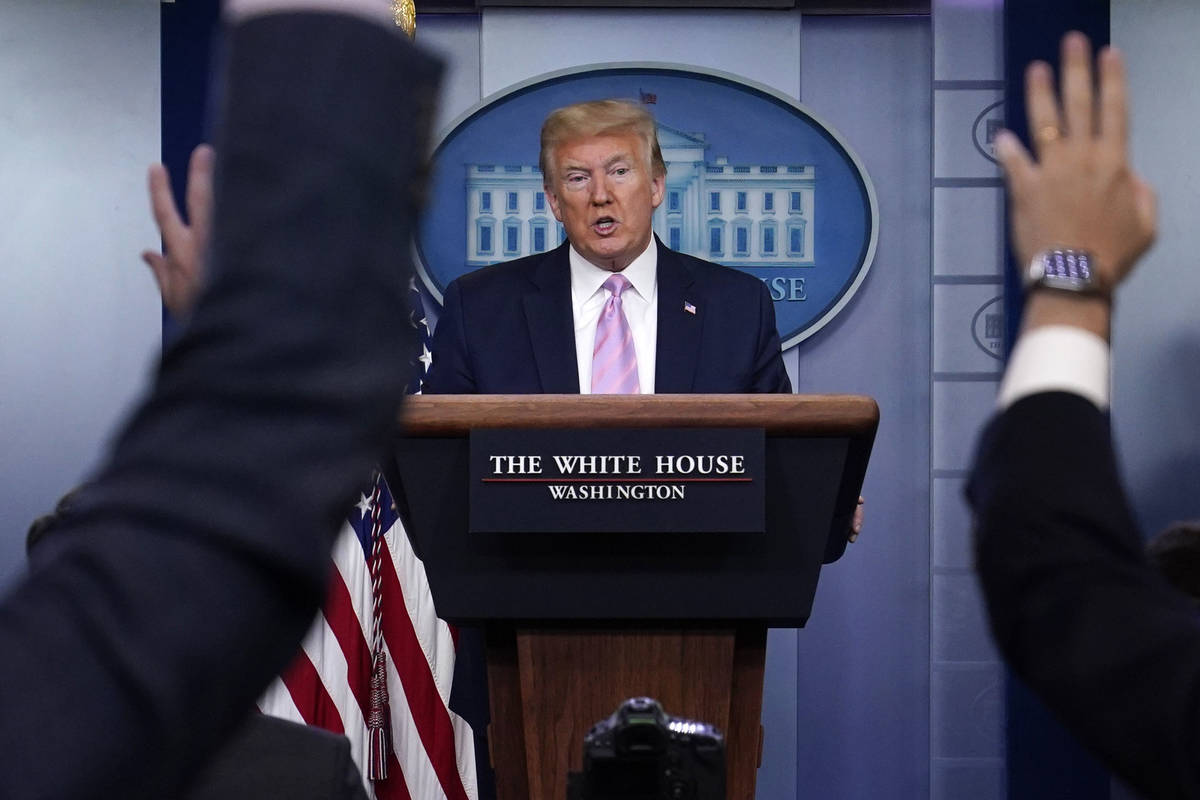Trump struggles with when to end coronavirus shutdown

WASHINGTON — President Donald Trump on Friday discussed one of the most difficult decisions facing him as president: How and when to relax a social distancing campaign that has reduced the spread of the coronavirus.
“I’m going to have to make a decision and I only hope to God that it’s the right decision,” said Trump.
On the one hand, the robust national social distancing campaign reduced predictions for the U.S. death toll from more than 2 million Americans, to a range of 100,000 to 240,000, and down to 60,000 in a matter of weeks.
On the other, Trump noted the closed-down economy has inflicted great suffering as well, as some 17 million Americans have found themselves newly unemployed.
Trump has been pulled in opposite directions while addressing the pandemic.
On March 24, Trump told Fox News, “I would love to have the country opened up and raring to go by Easter.” Before the week was over, Vice President Mike Pence was describing that statement as “aspirational,” and the public-health community exhaled.
Before the month was over, the Coronavirus Task Force announced a new campaign, “30 Days to Slow the Spread” that followed its “15 Days to Slow the Spread” campaign.
And so the focus moved from ending the nation’s stay-at-home program around Easter, April 12, to flirting with a partial opening in May or even later.
When will it end?
One pro-business cheerleader, Treasury Secretary Steven Mnuchin, left room for either outcome when he told CNBC, “If the doctors let us, we could be open for business in the month of May.”
From the medical side, Surgeon General Jerome Adams told Fox News Friday that while there are spots in the country that can think about opening up, most of America will not return to business on May 1.
Also on Friday, the New York Times reported the Department of Homeland Security predicted the U.S. death toll could climb to 200,000 if stay-at-home orders are lifted.
It was in this context that Trump walked up to the podium Friday flanked by Vice President Mike Pence. Sitting ready to field medical questions were the physicians on the task force – Dr. Anthony Fauci, task force lead coordinator Dr. Deborah Birx, Adams and U.S. Food and Drug Administration Commissioner Dr. Stephen Hahn.
While Trump pointed to positive indicators, Birx cautioned, “We have not reached the peak.”
Trump moved from saying a month ago that any American who wanted a coronavirus test could get one, a highly inaccurate claim, to maintaining that it is not necessary for all Americans to be tested. It’s a claim that doesn’t assuage many Americans with symptoms, but no access to a test.
Lack of tests criticized
Senate Minority Leader Chuck Schumer responded, “President Trump simply does not have a handle on testing. Democrats fought for free coronavirus testing. Now, we continue to fight to make sure that Americans across the country are getting tested so we can track and beat this pandemic and help those affected.”
While many Americans who want tests have trouble obtaining them, the task force has been scrambling to ramp up the number of tests. More than 2.1 million tests have been given in the United States, but former FDA Commissioner Scott Gottlieb forecast a need for 750,000 tests each week.
Three weeks ago, Birx said, Trump pushed for an antibody test to determine if individuals have been exposed to the virus – information that is crucial for epidemiologists trying to determine how prevalent the virus is in a community.
Stanford researchers administered 3,200 finger-prick antibody tests last weekend.
Fauci told the Wall Street Journal that when social distancing ends, “It isn’t like a light switch on and off, it’s a gradual pulling back on certain of the restrictions and to try and get society a bit back to normal.”
But Friday Fauci also noted that while the country is “starting to see the leveling off and the coming down,” this is not the time to think that we need to be pulling back from the nation’s mitigation practices.
Rep. Dina Titus, D-Nev., criticized Trump’s shifting statements.
“The falsehoods and misinformation that President Trump packs into a single briefing is dangerous,” Titus said. “We need to listen to the scientists and the health care workers on the ground who are telling us about the need for vastly more testing and personal protective equipment.”
Toward the end of Friday’s nearly two-hour briefing, a somber Trump said he would be guided by task force members, then decide for himself.
“There’s always going to be a risk that something can flare up,” Trump said, adding ”but I’d like the flare up to be very localized so that we can control it.”
Contact Debra J. Saunders at dsaunders@reviewjournal.com or 202-662-7391. Follow @DebraJSaunders on Twitter.